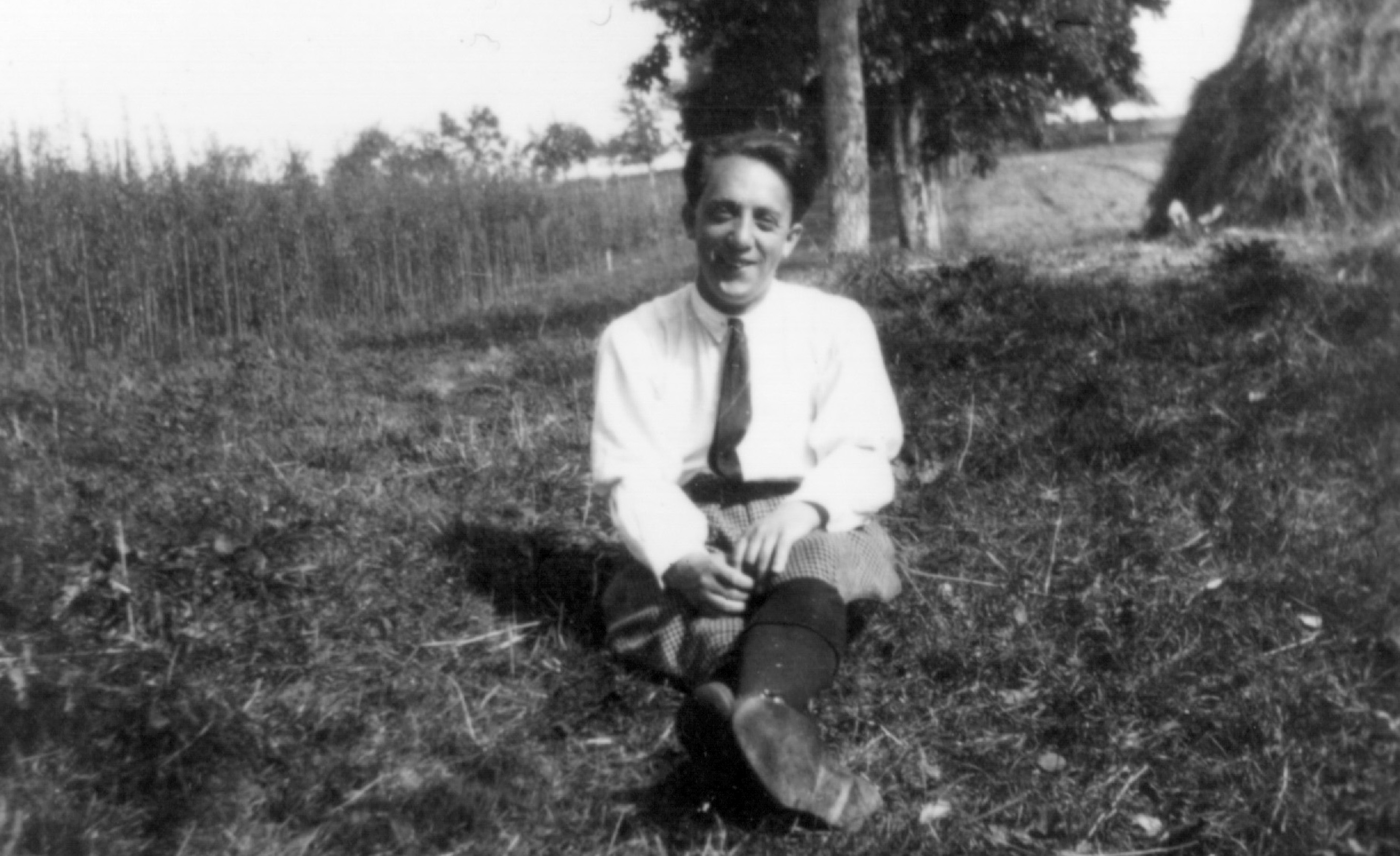- Portrait
- History

He could also have been a painter, but he chose music: Karl Amadeus Hartmann, the son of a Munich painter, began composing after seeing Weber’s opera Der Freischütz. As a student in Munich in the 1920s, he was inspired by the new ideas and visionary concepts of his time after the experiences of the First World War and the resulting political upheavals.
Wild early years
Inspired by Futurism, Dada and jazz, “I threw myself into the adventures of the intellectual revolution, perhaps not entirely free of the smug feeling of having been there,” as he wrote in his Autobiographical Sketches. In 1929, the young composer’s encounter with the conductor and composer Hermann Scherchen, who became his mentor and helped the composer find his artistic path, proved decisive: “I learned nothing in any conservatory or music academy that is in the least bit comparable to what Scherchen taught me.”
“Inner emigration”
His first artistic successes came at the beginning of the 1930s. But in 1933, it all fell apart: Hartmann’s music and anti-fascist stance did not at all correspond to the ideas of the new National Socialist rulers. And their ideology did not correspond at all to the composer’s thinking, shaped as it was by humanist and socialist ideals. He begins a self-imposed exile from German musical life, an “inner emigration”. His music becomes a declaration of his beliefs, a political protest: his symphonic poem Misere denounces the murder of prisoners in a concentration camp, his First String Quartet contains melodies from Jewish chants, his opera Simplicius Simplicissimus quotes music by colleagues considered “degenerate”, his Concerto funebre, written in 1939, expresses the grief and horror at the German invasion of Czechoslovakia.
During the war, Hartmann took lessons from Anton von Webern. “With him I did analyses and went through my new works. I was very happy during this time; despite all the isolation, I had found a like-minded person as a teacher and as a friend, his belief in music gave me strength to continue working.” The political situation came to a head: to protect his scores from war damage and out of fear of discovery by the National Socialists, he buried them in a zinc box in the parish garden of a priest he knew. He himself hid in the cellar of his parents-in-law's house on the Starnberger See.
A successful new start
Thanks to his uncompromising, resistant attitude towards the National Socialists, Karl Amadeus was a leading figure after the end of the war: he took over the position of music dramaturge at Bavarian State Opera and founded musica viva, a radio concert series for new music on Bayerischer Rundfunk that still exists today. And most importantly, his works could be played in public again! Not everything that was created during the Nazi dictatorship and the war was immediately presented to the public, but was first subjected to a revision, with the obvious contemporary references being transferred into something more general.
Hartmann was not one of those composers who propagated new techniques, sounds and compositional strategies in post-war Germany. His composing reveals his interest in tradition: Renaissance music, Baroque, fugue, counterpoint, late Romanticism, Neoclassicism and Expressionism. He was concerned with creating a balance between construction and emotion in his music, what he calls a “lived-through work of art”.
Biographical data of the composer:
1905: Born in Munich
1924-31: Studies at the Staatliche Akademie der Tonkunst in Munich
1929: Meeting with Hermann Scherchen
1931: First public premiere
1935-40: Performances of his works in Prague, Geneva, London, Liège and St. Gallen
1942: Private lessons with Anton von Webern 1945: Music dramaturge at Bavarian State Opera, foundation of the concert series musica viva
from 1947: Public performances of Hartmann’s works in concerts 1949: Music Prize of the City of Munich; many other honours and awards follow
1952: Member of the Bavarian Academy of Fine Arts
1955: Member of the Academy of Arts Berlin (West)
1963: Death in Munich